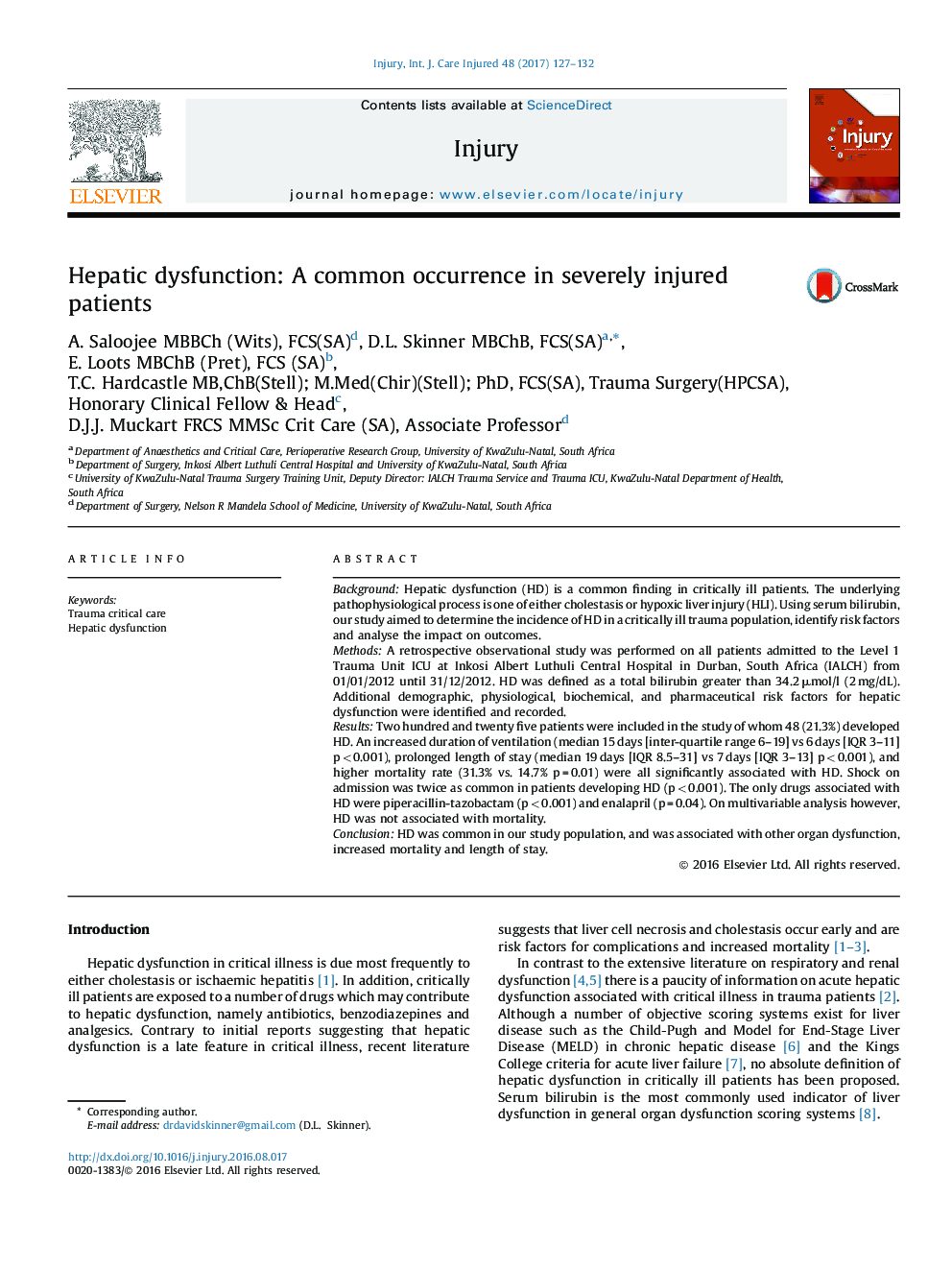| Article ID | Journal | Published Year | Pages | File Type |
|---|---|---|---|---|
| 5652707 | Injury | 2017 | 6 Pages |
BackgroundHepatic dysfunction (HD) is a common finding in critically ill patients. The underlying pathophysiological process is one of either cholestasis or hypoxic liver injury (HLI). Using serum bilirubin, our study aimed to determine the incidence of HD in a critically ill trauma population, identify risk factors and analyse the impact on outcomes.MethodsA retrospective observational study was performed on all patients admitted to the Level 1 Trauma Unit ICU at Inkosi Albert Luthuli Central Hospital in Durban, South Africa (IALCH) from 01/01/2012 until 31/12/2012. HD was defined as a total bilirubin greater than 34.2 μmol/l (2 mg/dL). Additional demographic, physiological, biochemical, and pharmaceutical risk factors for hepatic dysfunction were identified and recorded.ResultsTwo hundred and twenty five patients were included in the study of whom 48 (21.3%) developed HD. An increased duration of ventilation (median 15 days [inter-quartile range 6-19] vs 6 days [IQR 3-11] p < 0.001), prolonged length of stay (median 19 days [IQR 8.5-31] vs 7 days [IQR 3-13] p < 0.001), and higher mortality rate (31.3% vs. 14.7% p = 0.01) were all significantly associated with HD. Shock on admission was twice as common in patients developing HD (p < 0.001). The only drugs associated with HD were piperacillin-tazobactam (p < 0.001) and enalapril (p = 0.04). On multivariable analysis however, HD was not associated with mortality.ConclusionHD was common in our study population, and was associated with other organ dysfunction, increased mortality and length of stay.
